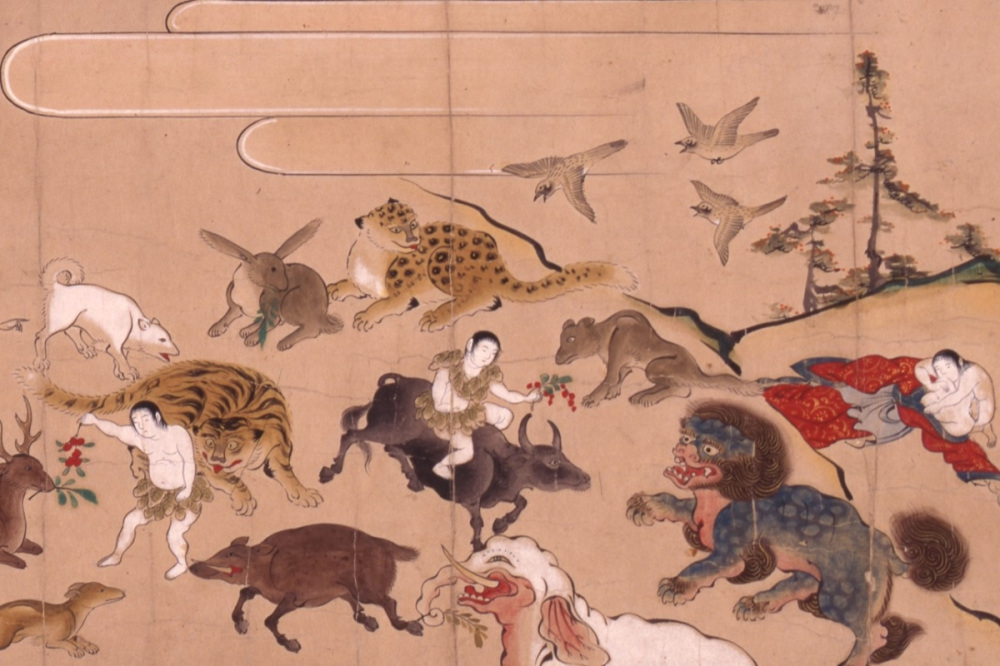Wakayama Zone: Movies
-02:PAST 「過去」-
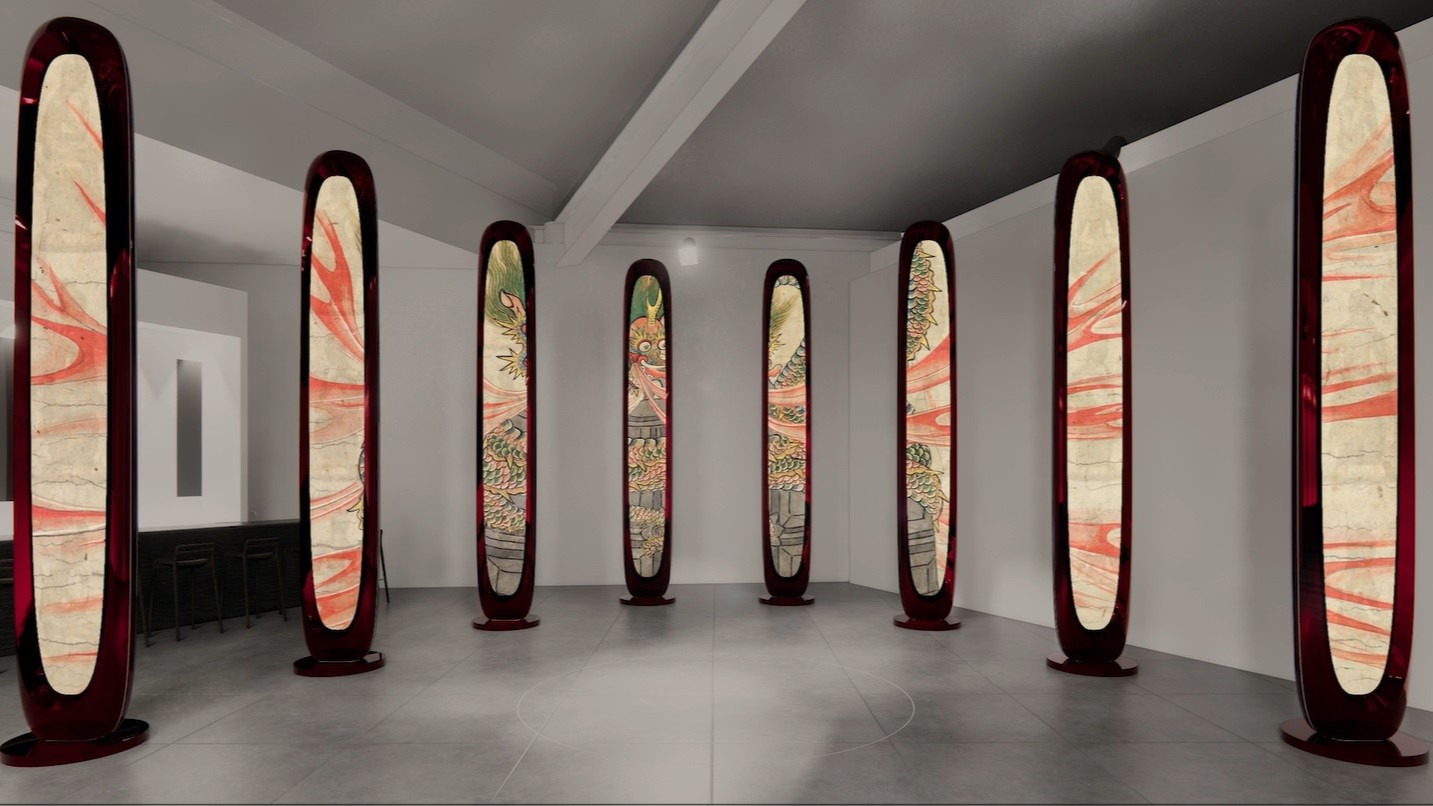
Past: Wakayama's Creation, Volcanoes, Nature, Mandalas, and Engi Emaki Illustrated Narrative Scrolls
This chapter unravels Wakayama’s nature and history, beginning with volcanoes and geological formations, and then exploring the past, including mandalas and engi emaki illustrated narrative scrolls.
In the past, people were drawn into the mystical world of divine tales through visions revealed in paintings, strengthening their faith in deities and Buddhas. Kii Province (now Wakayama Prefecture) has long been home to many sacred sites that are renowned throughout Japan, where numerous origin legends were created, passed down, and depicted in paintings.
Source: Wakayama Prefectural Museum"The World of Kii Province's Engi Emaki Illustrated Narrative Scrolls(External Link)
| Ⅰ | Mandalas and the Kumano Gongen Engi Emaki Illustrated Narrative Scrolls |
| Ⅱ | The Origins of Kumano Faith: A Spirit of Tolerance |
| Ⅲ | Wakanoura: The "Sacred Land of Waka Poetry" as Immortalized in the Man'yoshu Poems |
| Ⅳ | Dojoji Temple Engi: The Tale of Anchin and Kiyohime |
| Ⅴ | Minakata Mandala and Minakata’s Study of the Twelve Zodiac Signs – A Giant of Knowledge |
Ⅰ Mandalas and the Kumano Gongen Engi Emaki Illustrated Narrative Scrolls
The Kumano pilgrimage mandalas are religious paintings that richly depict the landscapes and narratives of the sacred land of Kumano, encapsulating its worldview. Kumano bhikkhuni (itinerant nuns) traveled across the country, interpreting and narrating the Kumano Nachi Pilgrimage Mandala and the Kumano Kanshin Jikkai Mandala, encouraging people from all over Japan to embark on pilgrimages to the sacred sites of Kumano.
Additionally, engi (origin legends) are sacred texts that describe the history of temple and shrine establishments, as well as the miraculous deeds of deities and Buddhas. These texts served as mystical tools, preserving secret tales about deities and Buddhas. When these engi were accompanied by illustrations and compiled into scrolls, they became engi emaki illustrated narrative scrolls.
Source: Wakayama Prefectural Museum "Sacred Pilgrimage: Kumano and Koya" and "The World of Kii Province's Engi Emaki Illustrated Narrative Scrolls"(External Link)
- Nachi Pilgrimage Mandala
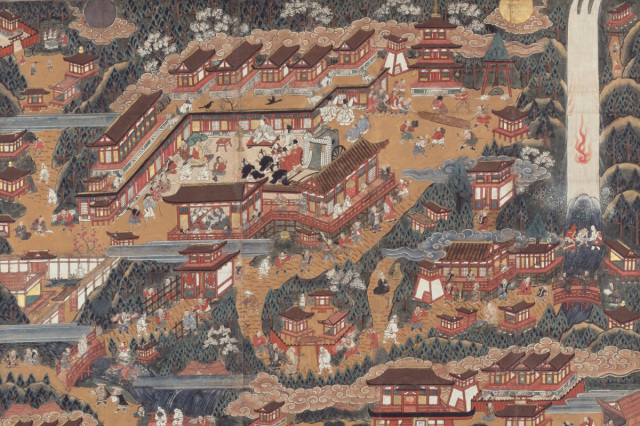
- Hongu Pilgrimage Mandala
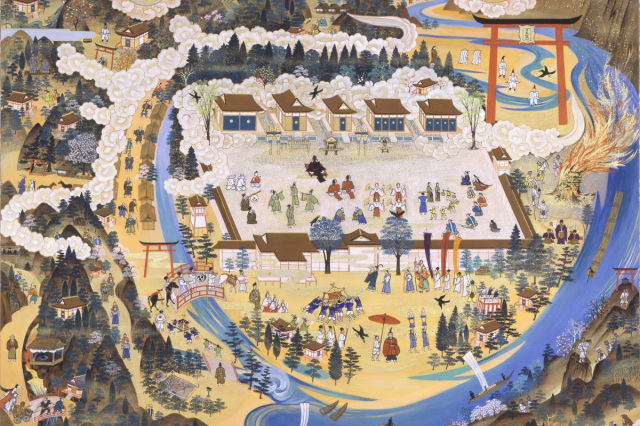
- Shingu Pilgrimage Mandala
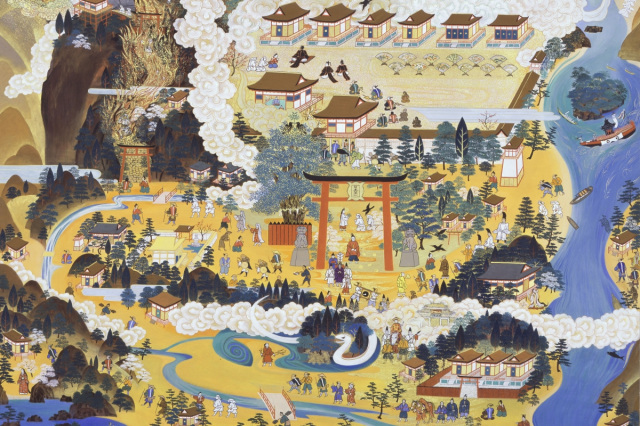
- Kumano Kanshin Jikkai Mandala
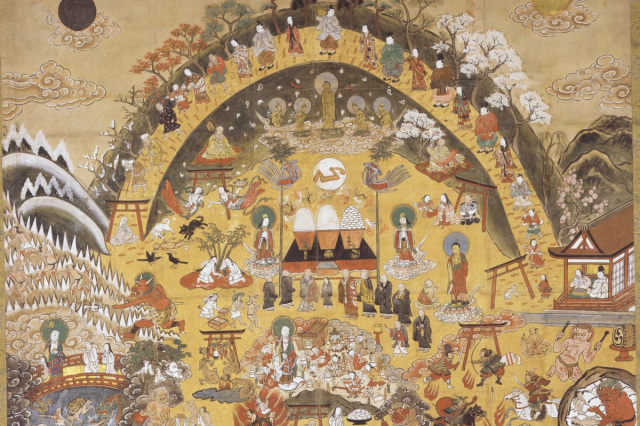
- Kumano Hongu Hachiyo Mandala
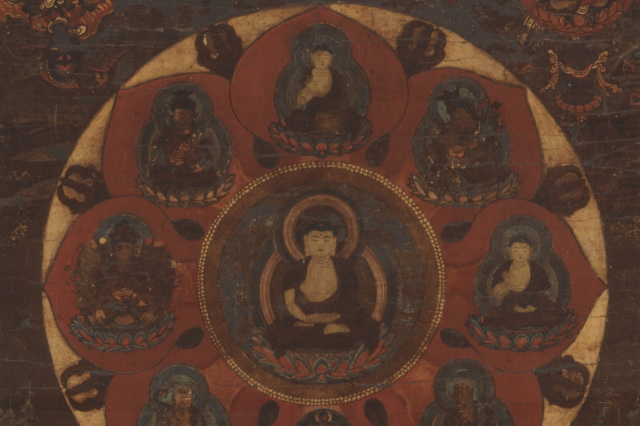
- Hananoiwaya Festival Painting
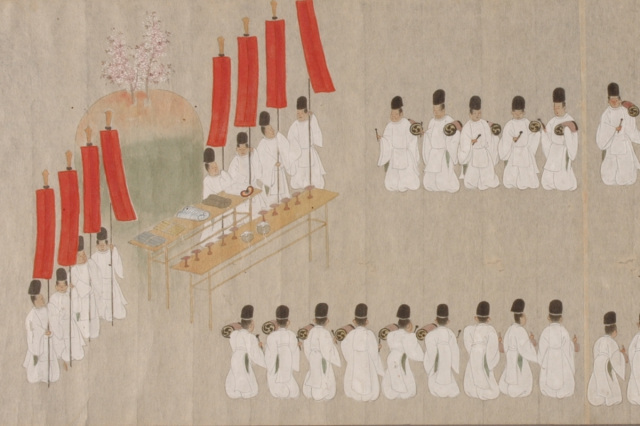
- Kumano Gongen engi emaki illustrated narrative scrolls (1)
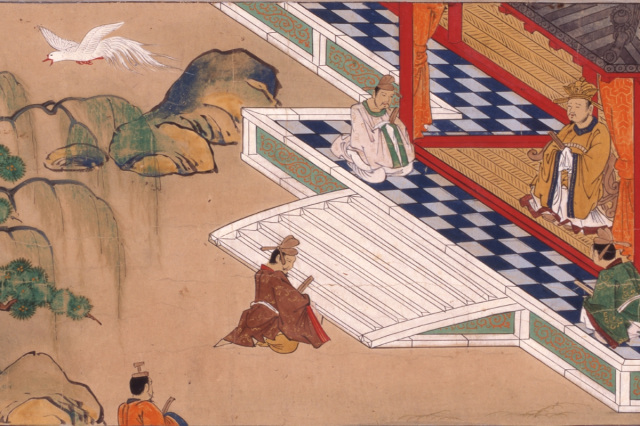
- Kumano Gongen engi emaki illustrated narrative scrolls (2)
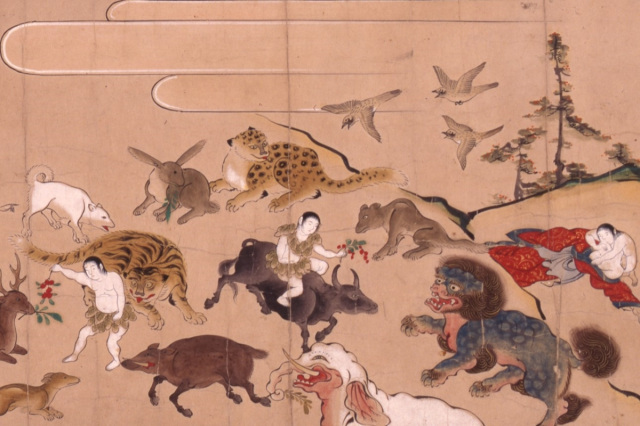
- Kumano Gongen engi emaki illustrated narrative scrolls (3)
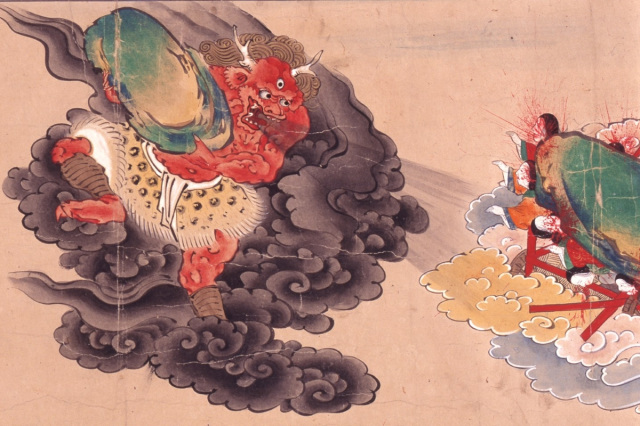
Ⅱ The Origins of Kumano Faith: A Spirit of Tolerance
In Kumano, deities were enshrined in places closely connected to nature. Since ancient times, people have likely felt the presence of the sacred in its magnificent landscapes.
By the late Heian period (794 to 1185) around the 11th century, Hongu, Shingu, and Nachisan came to be recognized collectively as the Three Grand Shrines of Kumano (Kumano Sanzan). Each of these sites became dedicated to the Kumano Junisho Gongen (Twelve Kumano Deities) and was revered as a place of deep faith. Each of these deities was also associated with a Buddhist counterpart (honjibutsu) – Hongu was linked to Amida Nyorai (Amitabha Buddha), Shingu to Yakushi Nyorai (Medicine Buddha), and Nachi to Senju Kannon (Thousand-Armed Kannon), with each site considered a Pure Land of its respective deity.
People worshipped the deities and Buddhas as inseparable entities, embracing both within their faith. The deities and Buddhas of Kumano were also depicted in various forms, including mandalas and sculptures.
Source: Wakayama Prefectural Museum "Sacred Pilgrimage: Kumano and Koya"(External Link)
- Map of the Hongu main shrine and its sub-shrines
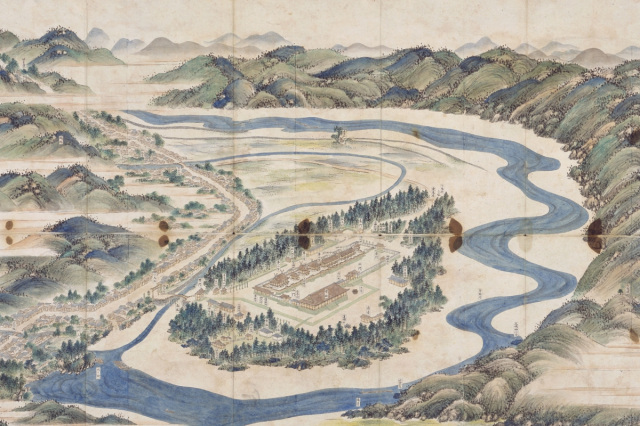
- Map of the Shingu main shrine and its sub-shrines
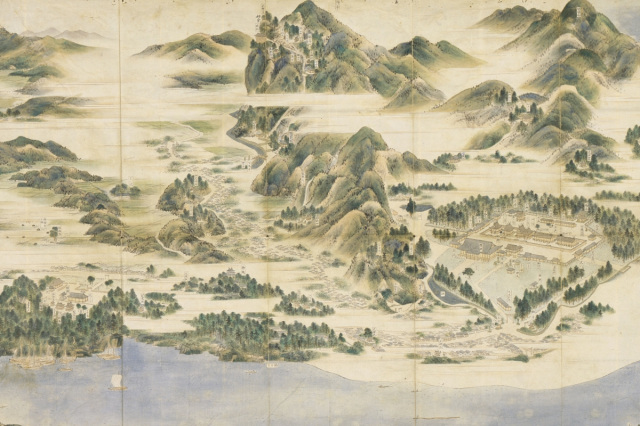
- Map of the Three Waterfalls of Nachi
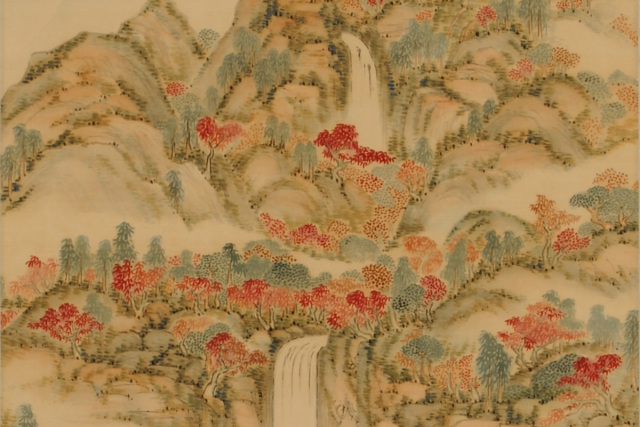
- Kumano Hongu Taisha Grand Shrine
- Kumano Hongu Taisha is one of the Kumano Sanzan shrines and a holy place that has been visited by many people since the Heian pe…
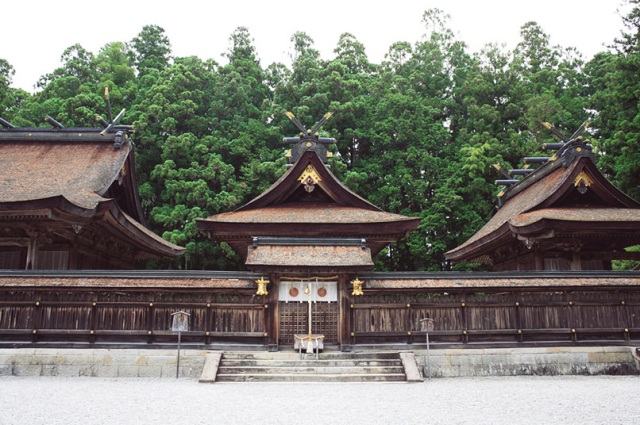
- View more
- Kumano Hayatama Taisha Grand Shrine
- Kumano Hayatama Taisha Grand Shrine is one of the Kumano Sanzan. The grounds are home to a sacred conifer tree that is a natural…
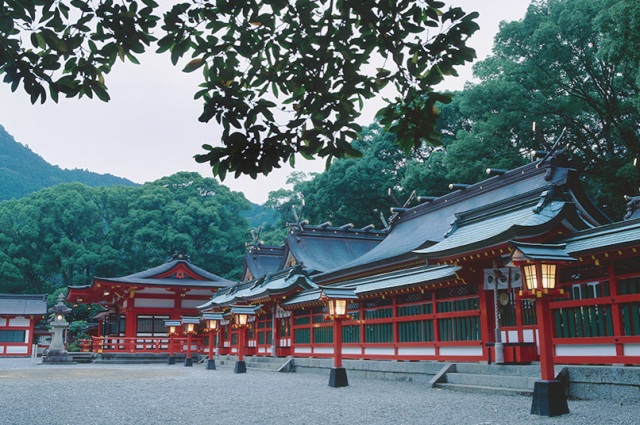
- View more
- Kumano Nachi Taisha Grand Shrine
- One of the great shrines of the Kumano Sanzan, Kumano Nachi Taisha Grand Shrine is the origin of the ancient faith that worships…
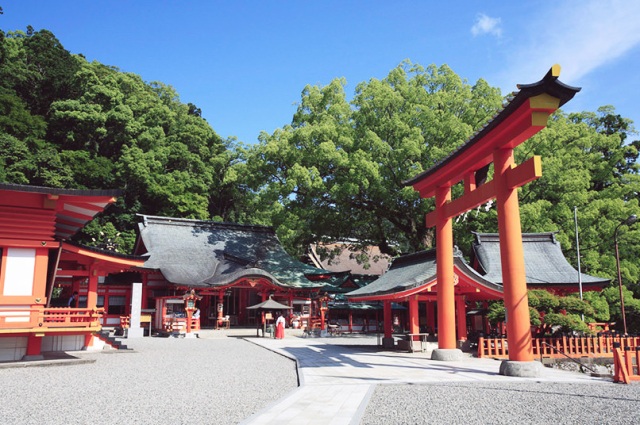
- View more
- Oyunohara
- This was the original site of Kumano Hongu Taisha Grand Shrine, until a flood in 1889. Now, only two small stone shrines remain,…
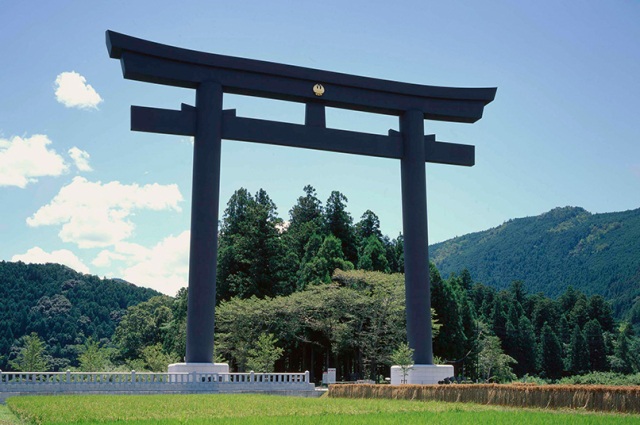
- View more
- Kamikura-jinja Shrine
- Kamikura-jinja Shrine, Kumano Hayatama Taisha Grand Shrine's original shrine, contains the Gotobiki-iwa Rock. Legend says th…
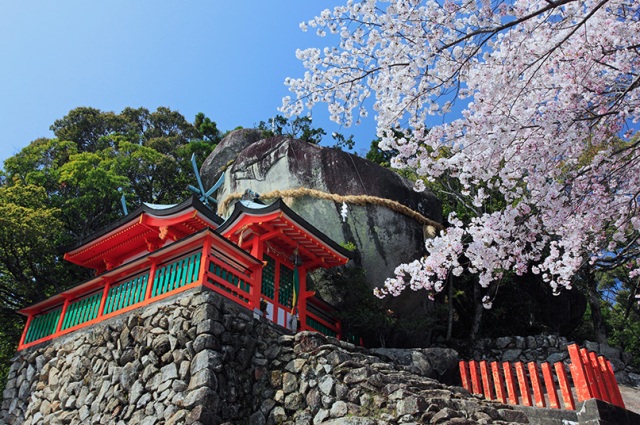
- View more
- Nachisan Seiganto-ji Temple
- Prospering as a sacred ground along with Kumano Nachi Taisha Grand Shrine, this temple is the oldest structure in Kumano. Many p…
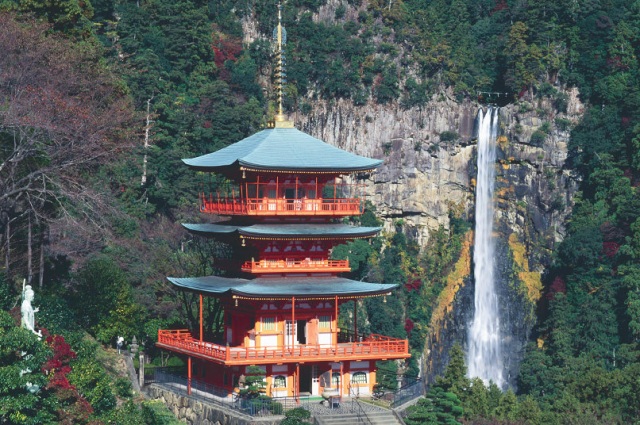
- View more
Ⅲ Wakanoura: The "Sacred Land of Waka Poetry" as Immortalized in the Man'yoshu Poems
Wakanoura, the sacred land of waka poetry, was immortalized in verse by the Man'yoshu poet Yamabe no Akahito, who wrote: "At Wakanoura, when the tide rises, the lagoon disappears, and cranes cry as they fly over the reeds."
The breathtaking scenery of Wakanoura, where nature and culture exist in harmony, begins with waka poetry, which can be said to be the foundation of Japanese spiritual culture. Throughout history, it has captivated people and fostered various forms of art. To the east of the tidal flats, on the mid-slope of Nagusayama, stands Kimiidera, the second temple of the thirty-three temples in the Saikoku Kannon Pilgrimage.
During the Edo period (1603 to 1868), the Kishu Tokugawa clan, one of the three Tokugawa branches second in status only to the shogunate, ruled over the Kishu Domain. The scenic beauty of Wakanoura enchanted even generations of Kishu lords.
The Kishu Tokugawa clan, one of the three Tokugawa branches ranked second only to the shogunate, became the rulers of the Kishu Domain, and the breathtaking scenery of Wakanoura also captivated generations of domain lords.
Source: Japan Heritage, "Wakanoura Bay ~ A Treasure House of Scenic Beauty ~"(External Link)
Reference: Japan Heritage, "A 1,300-year-old Journey to the Soul / Saigoku Kannon Pilgrimage"(External Link)
- Map of Wakanoura
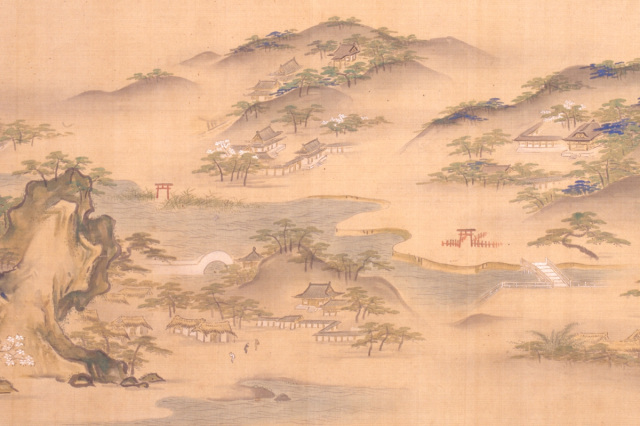
- Wakamatsuri Folding Screen
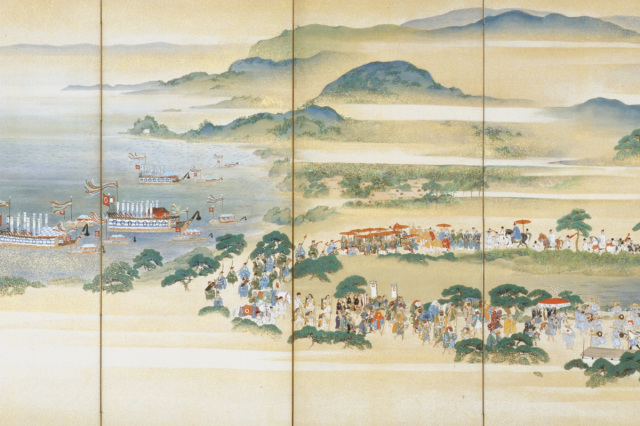
- Kimiidera Temple Pilgrimage Mandala
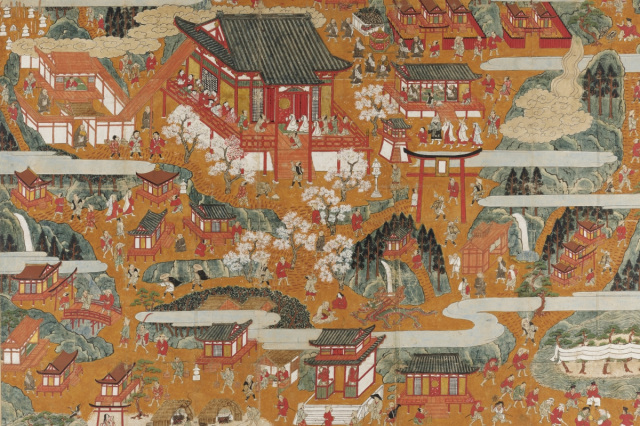
- Tamatsushima Shrine
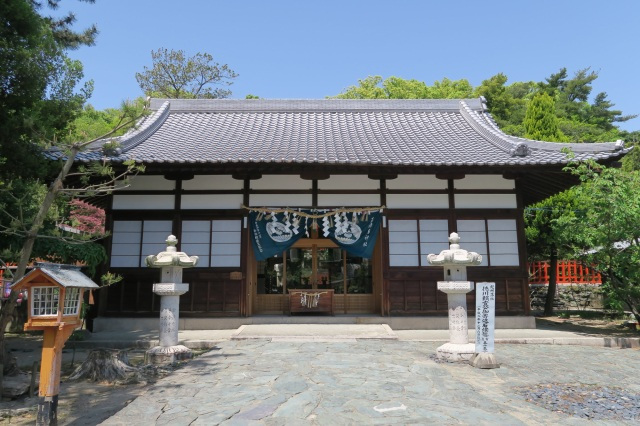
- Kishu Toshogu Shrine
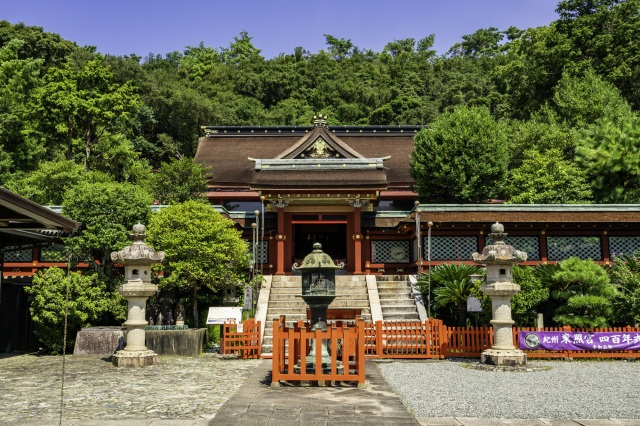
- Kimii-dera Temple
- This temple is said to have been founded by a Chinese monk in the year 770 and was a place to pray for the prosperity of the Tok…
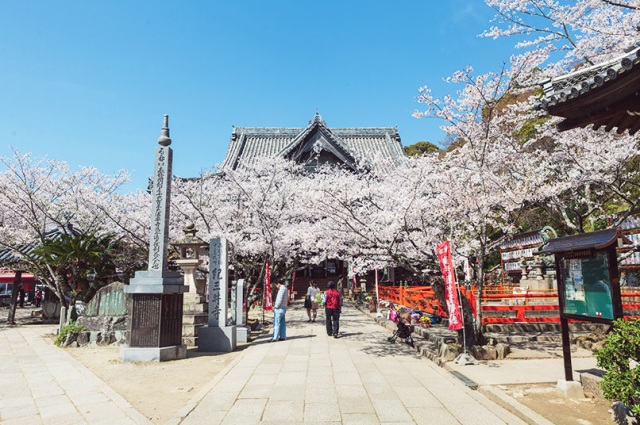
- View more
Ⅳ Dojoji Temple Engi: The Tale of Anchin and Kiyohime
The story of Anchin and Kiyohime, known as the "Dojoji-mono" in kabuki and Noh theater, is set at Dojoji Temple in Hidakagawa Town, which serves as the backdrop for its dramatic climax. The Dojoji engi emaki illustrated narrative scroll, created in the Muromachi period (1336 to 1573), is also housed at the temple. Many legendary sites related to Kiyohime remain in the area around Nakaheji-cho in Tanabe City, including the supposed site of her family home and Kiyohime's grave.Source: Wakayama Rekishi Monogatari Historical Tales, Story 042 and Story 053(External Link)
- Dojoji Temple engi emaki illustrated narrative scroll (1)
- Anchin and Kiyohime meet at Masago in Nakaheji-cho in Tanabe City
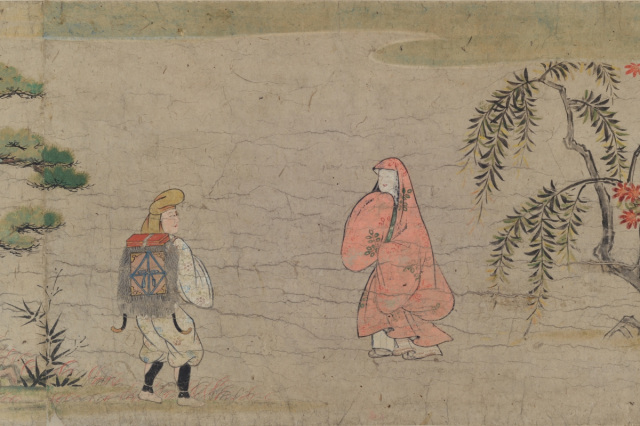
- Dojoji Temple engi emaki illustrated narrative scroll (2)
- Kiyohime, betrayed, begins to transform as she pursues Anchin
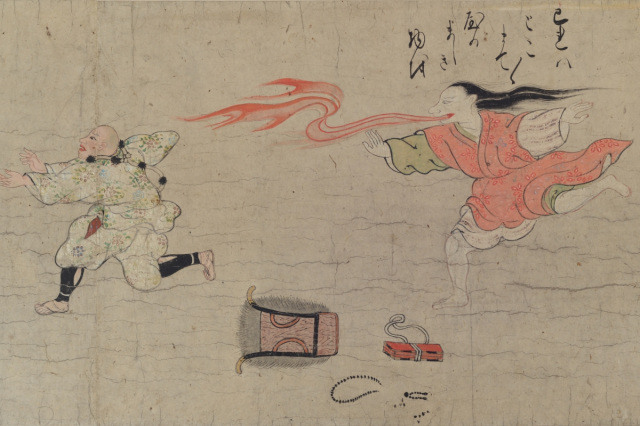
- Dojoji Temple engi emaki illustrated narrative scroll (3)
- Kiyohime crosses the Hidaka River, having transformed into a great serpent
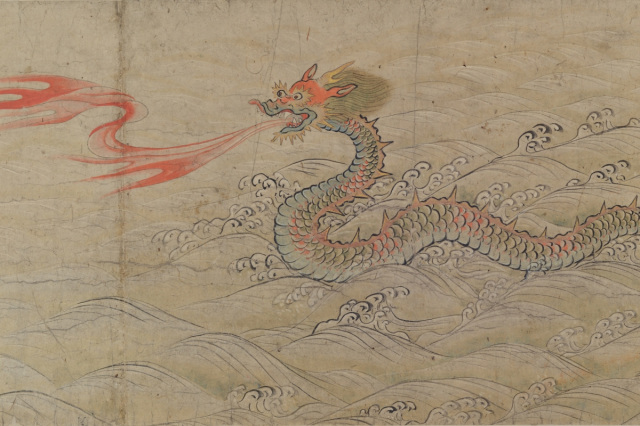
- Dojoji Temple engi emaki illustrated narrative scroll (4)
- Anchin hides inside the temple bell but is burned to death by Kiyohime, now a serpent
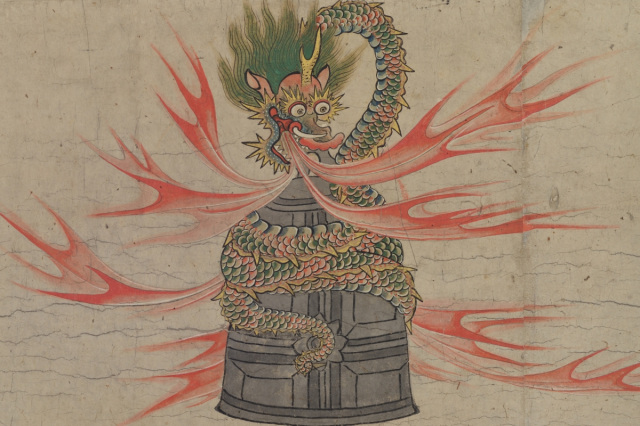
- Dojoji Temple illustrated lecture / Dojoji Temple
- Fuganji Temple (commonly known as Ichigan-ji), Kiyohime’s memorial temple
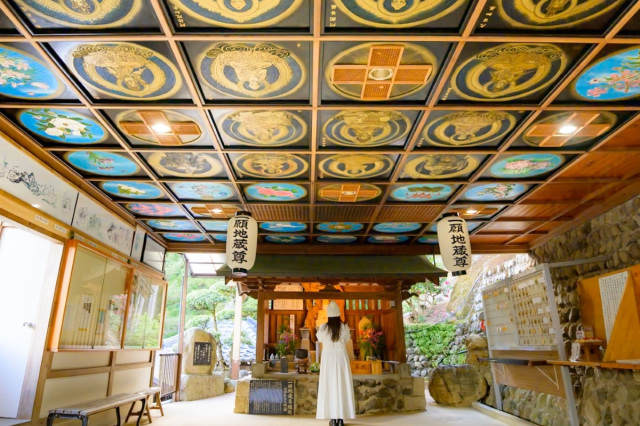
Ⅴ Minakata Mandala and Minakata’s Study of the Twelve Zodiac Signs – A Giant of Knowledge
Minakata Kumagusu was a towering figure in natural history from Wakayama Prefecture (April 15, 1867–December 29, 1941).
His research spanned a wide range of fields, from biology, including the study of slime molds, to the humanities. In folklore studies, he played a pivotal role alongside Yanagita Kunio. A lifelong independent scholar, he also dedicated himself to local environmental conservation and earned recognition as a pioneering ecologist.
- Seated Bodhisattva Statue
- his gilt-bronze Buddha statue was excavated from a sutra burial mound on Mt. Nachi, a sacred mountain known as a spiritual site. The half-lotus seated, contemplative pose is characteristic of hanka shiyui (pensive bodhisattva) statues, which in Japan are often revered as depictions of Miroku Bosatsu (Maitreya Bodhisattva) – the Buddha prophesied to appear 5.67 billion years after the Buddha's death. Many such statues were produced during the Asuka period (538 to 710), and this piece is believed to have been buried in preparation for Miroku’s future arrival.
(Source: National Institutes for Cultural Heritage Collection Search System)
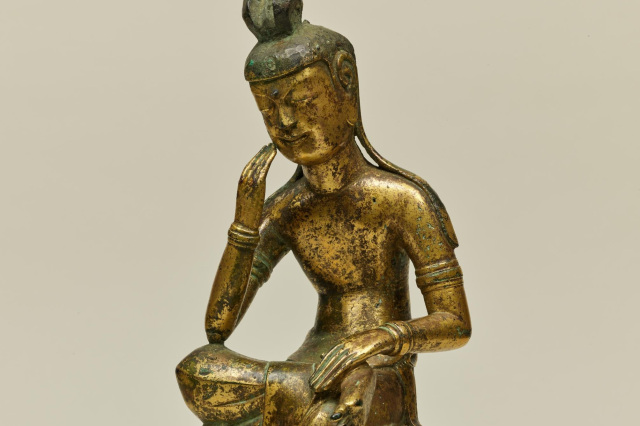
- National Institutes for Cultural Heritage Collection Search System
- Minakata Mandala
- There are two primary versions of what is known as the "Minakata Mandala." Both appear as diagrams within letters written by Minakata Kumagusu to Dogi Horyu, who later became the head abbot of Koyasan Shingon Buddhism. One of these mandalas, drawn in a letter dated July 18, 1903, reinterprets the philosophy of esoteric Buddhist mandalas through Minakata’s own intellectual framework, incorporating visual elements to explain his ideas.
(Source: Minakata Kumagusu Archives website)
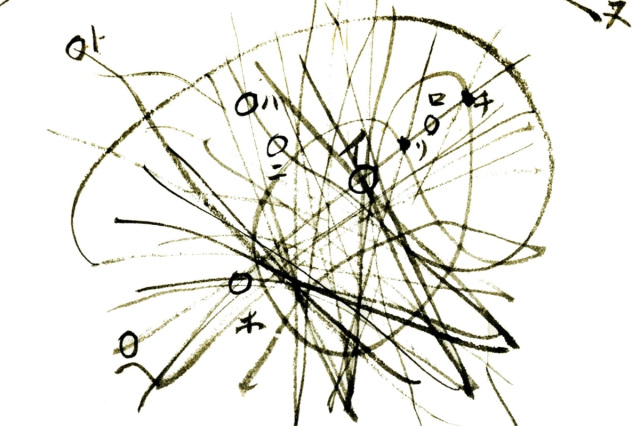
- Minakata Kumagusu Archives website
- Draft of Minakata’s Study of the Twelve Zodiac Signs
- During the formative years of Japanese folklore studies, Minakata Kumagusu made significant contributions. His approach was distinguished by his mastery of Japanese, Chinese, and Western scholarship, allowing him to conduct comparative ethnographic research on a global scale. He also brought attention to folk traditions related to sexuality, an area often overlooked.
He exchanged numerous letters with Yanagita Kunio, later known as the father of Japanese folklore studies. In later years, Yanagita described Minakata as "the ultimate potential of the Japanese mind."
(Source: Minakata Kumagusu Museum website)
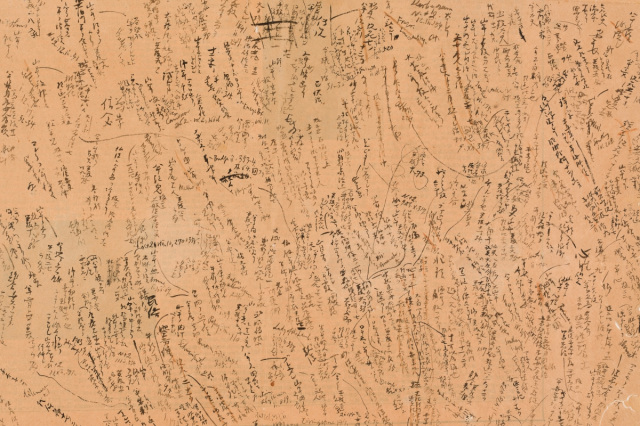
- Minakata Kumagusu Museum website
- National Institutes for Cultural Heritage Collection Search System
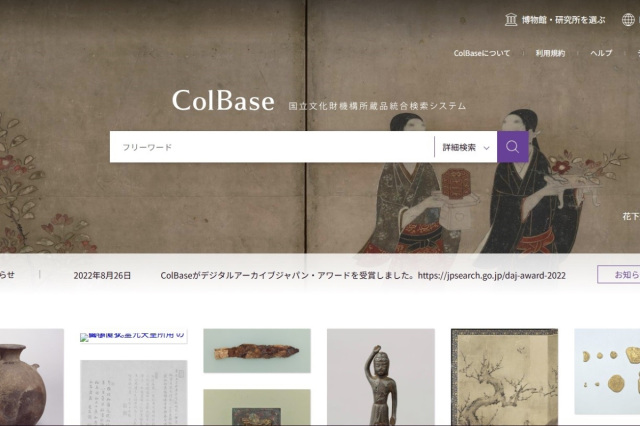
- National Institutes for Cultural Heritage Collection Search System
- Minakata Kumagusu Archives
- Minakata Kumagusu Archives is a modern facility built next door to the former home of Minakata Kumagusu, a Wakayama-born biologi…
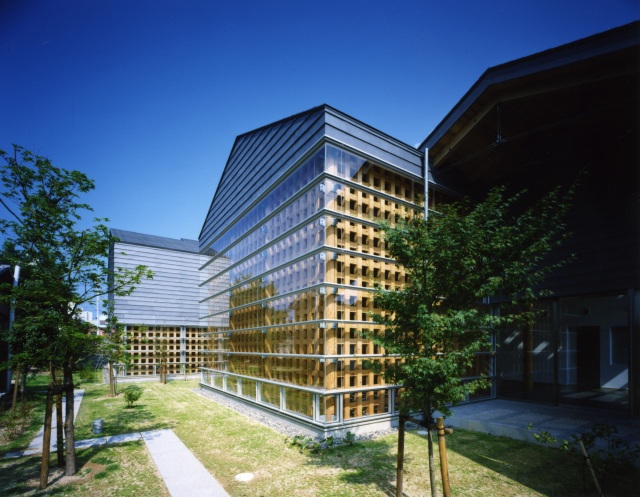
- View more
- Minakata Kumagusu Museum
- Dedicated to Wakayama-born biologist and naturalist Minakata Kumagusu, this museum tells the story of his life, recounting his a…
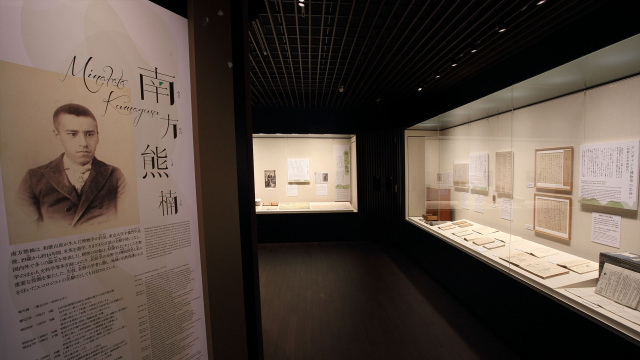
- View more
